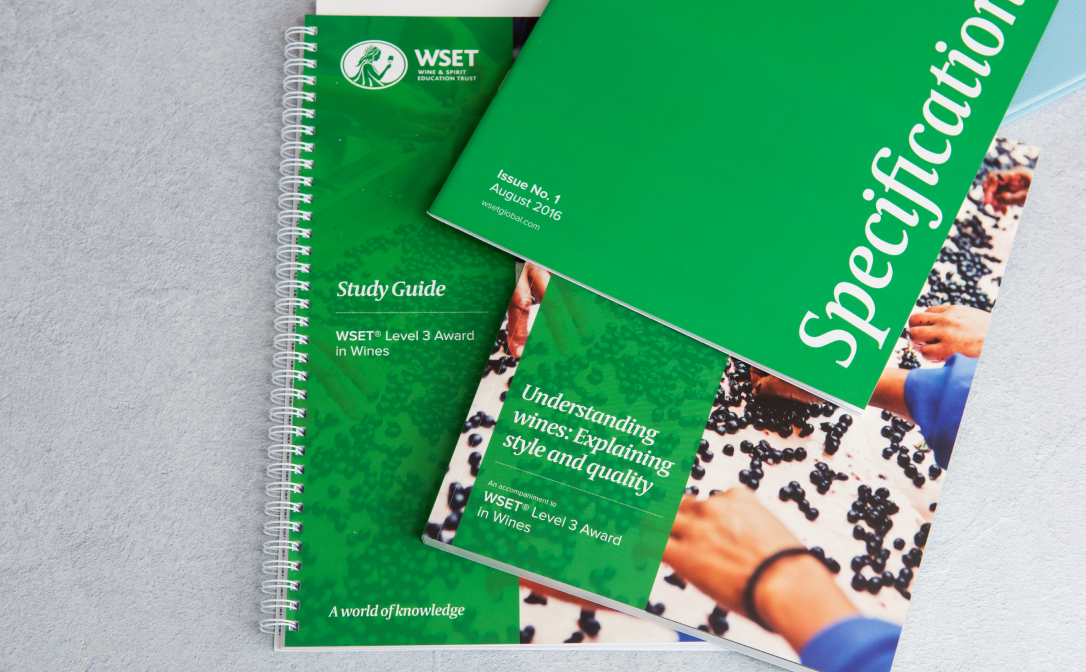Feel like you’re ready to take the next step in your wine education journey? Read on as Adriana Schmidt, our Digital Marketing Executive and a recent level 3 graduate, explains the ins and outs of this advanced course.
Where the Level 3 Award in Wines fits in
So, you’ve successfully passed the Level 2 Award in Wines, and now you’re wondering what to do next.
Yes, during the course you get to taste amazing wines from all over the world – Burgundy, Champagne. Margaret River, Mendoza – and you meet some great people along the way. But taking on level 3 is a big commitment, and although it is completely possible to pass and to do well, it should not be underestimated.
The course is suitable for professionals in the drinks industry as well as advanced enthusiasts. If you’re ready to learn the difference between spur and replacement cane pruning or between the Ancestral and Asti methods, this is the course for you.
Looking for a detailed outline of the WSET Level 3 Award in Wines? Click here for the specification document.

What is covered in the WSET Level 3 Award in Wines?
What is NOT covered?! Level 3 offers a comprehensive look at grape varieties from all over the world, the styles they are produced in, why wines taste the way they do, sparkling and fortified wines, and a complete introduction to tasting wine.
To help you understand and articulate exactly what you are tasting, all course providers use the trademarked WSET Systematic Approach to Tasting (SAT).
The SAT is used as a guide throughout and helps to break down the process into easy-to-follow steps. At my course provider, we had to know the SAT by heart by the third lesson, and that helped shorten the amount of time spent on writing a tasting note.
How long does it take to complete the WSET Level 3 Award in Wines?
The Level 3 Award in Wines consists of at least 84 hours of study, with about 30 hours covered by your course provider, either online or in person. The course delivery depends on your course provider, and they may even have various options to fit in with your work or schedule. I had one full day once a week over ten weeks, with two of them being study days.
It is recommended that you spend about 50 hours studying outside of the classroom, and the best tip I can give you is to read the chapters ahead of each lesson. If you recognise what your instructor is talking about in the lesson, you waste less time trying to play catch up.
I also used the app Brainscape to recap each chapter and to study for the exam. It was extremely useful to have the app’s flashcards with me on the go, whether I was commuting to work or waiting in a queue.
Preparing for exam day
Firstly, don’t be intimidated.
Go through the specification document to see exactly what you need to know from each section. You will find all the learning outcomes for the course in the specification, as well as recommended tasting samples, exam guidance, and plenty of sample questions.
You will probably be familiar with the Level 2 exam, which consists of only 50 multiple choice questions. The Level 3 exam also has this element, but in addition, you will have to complete the section of short, written answers, as well as a blind tasting.
My best tip for the written answers is to think about how the topics are connected. For example, you might have a question about a winemaking region in Chile, but this can also lead to questions about the process of making red wine, pruning techniques, or natural factors in winemaking.
Make sure to read the question at least three times and underline the verbs. Are you being asked to explain or identify? Should you circle one answer or find the odd one out?

The blind tasting
This sounds more intimidating than it is. It’s nothing like those sommelier videos on Instagram where they guess the winery, vineyard, and grape variety within a minute or two. You don’t have to figure out the region or the vintage. In fact, it’s easier if you don’t even try to guess the grape variety; you’ll just end up confusing yourself. Really, you’re just being asked to write a comprehensive and accurate tasting note.
Whenever you’re drinking some wine, go through the SAT in your mind. Think about what colour the wine is, are you picking up any primary, secondary or tertiary aromas (don’t worry, it will all be explained early on in your course), and if you think the wine is suitable for aging.
And after tasting dozens of wines over the course of a few days, or weeks, you will be more than well prepared!
Where can you take WSET courses?
That’s an easy question! There are hundreds of course providers in more than 70 countries, all listed on our Where to study page. You can filter according to location, language, and subject category – WSET offers more than wine 😊
Course delivery depends on the course provider, but it varies from an intensive weekend course to one session a week over a few weeks.
WSET also has an online classroom, with courses offered in English. Whether you’re moving around a lot, prefer to study at home, or just don’t have a course provider in your area, there’s no need to miss out on earning another WSET pin!
Head to our qualifications section to read more about the WSET Level 3 Award in Wines.
This blog post was prepared by Adriana Schmidt, Digital Marketing Executive at WSET.


